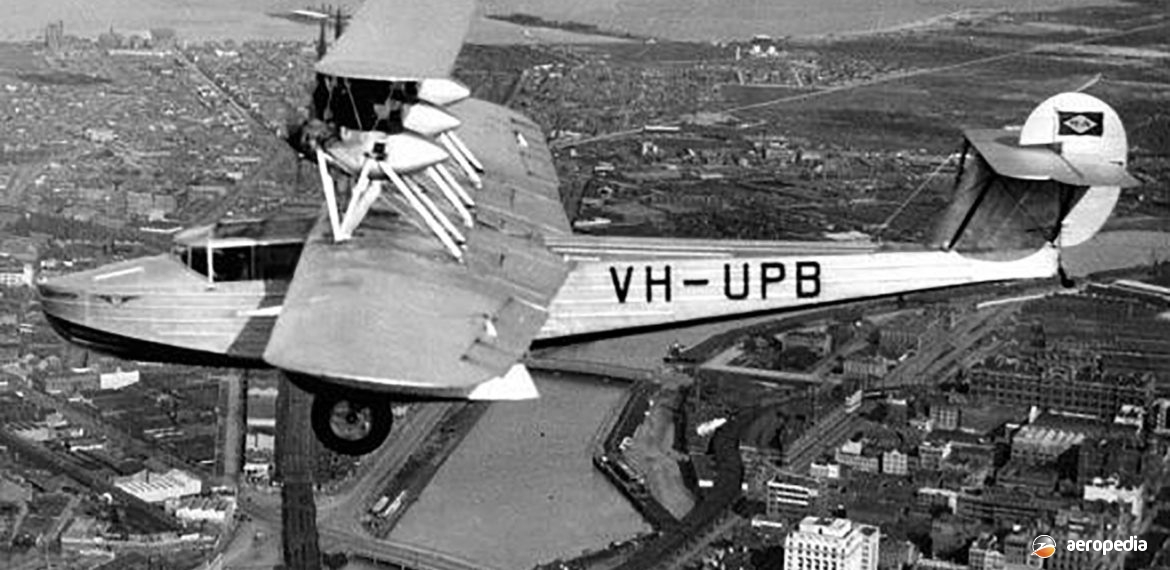Photograph:
Saro Windover VH-UPB (c/n A21/1) over Melbourne, VIC circa 1931 (W Civitco collection – Exxon Mobil)
Country of origin:
United Kingdom
Description:
Commercial amphibious flying boat
Power Plant:
Three 82 kw (110 hp) de Havilland Gipsy II four-cylinder in-line air-cooled engines
Specifications:
- Wingspan: 16.58 m (54 ft 4 in)
- Length: 12.61 m (41 ft 4 in)
- Max speed at sea level: 190 km/h (118 mph)
- Cruising speed: 145 km/h (90 mph)
- Landing speed: 97 km/h (60 mph)
- Endurance: 4 hours
- Empty weight: 1,926 kg (4,245 lb)
- Loaded weight: 2,586 kg (5,700 lb)
History:
The Saro A.21 Windover was of similar configuration to the Cutty Sark but was larger and had three Gipsy II engines. It could accommodate a crew of two and six passengers. It carried a small aerofoil above the engines to smooth the airflow over the tail and improve control, although at some stage this was removed from the Australian aircraft. Only two examples were built, the first (A.21/1) going to New Zealand, and the other (G-ABJP – c/n A.21/2) to a British operator. It is interesting to note the latter aircraft, with the undercarriage removed, gained the flight-refuelled endurance record of 54 hrs 13 minutes in August 1932.
The first Windover built (c/n A21/1) was fitted out to seat six. It was obtained by the newly formed Dominion Airways Ltd in New Zealand late in 1929 for a Wellington – Blenheim – Wellington airline service and registration ZK-ABW was allotted. Test flown in the United Kingdom in October 1930 it was shipped to New Zealand. However, the Company went into liquidation due to an accident prior to its arrival and the Windover was never un-crated. In November 1931 it was exported to Matthews Aviation at Essendon, VIC, becoming VH-UPB on 10 December that year.
The proposal was for it to enter the planned Matthews Aviation service from Melbourne (Essendon) VIC to Launceston and Hobart, TAS landing on land or water wherever necessary. However, it was found that the addition of the amphibious undercarriage affected its payload so radically as to make the chance of commercial success highly problematical. In the case of this aircraft it meant it could only carry four passengers instead of six. Because of this the Company abandoned ideas of a direct amphibian service to Hobart and Launceston and concentrated on a flying boat service to Smithton, TAS, with auxiliary land planes linking up Launceston and Hobart as required. On 24 March 1932 ownership was transferred to TP & RE Manifold of Camperdown, VIC, but it was returned to Matthews Aviation on 12 January 1933.
On 14 May 1936, whilst on a charter flight from Melbourne to King Island, it was delayed by headwinds. On arrival at King Island on sunset the pilot was unable to locate the airfield in the darkness and landed on the sea near the Currie Lighthouse. The five persons on board abandoned the aircraft, which was washed on to rocks and destroyed.

